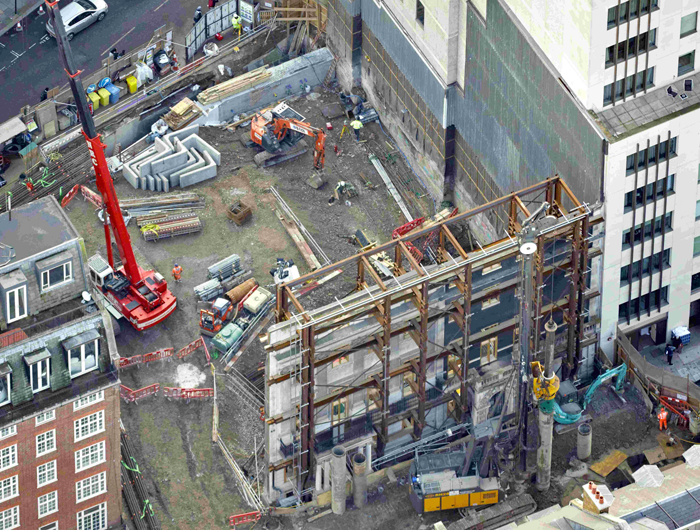Swanton Consulting is optimising its design workflow for temporary works by using Pointfuse software to significantly reduce the time it takes to produce CAD-ready 3D models from laser-scanned point cloud data
Swanton Consulting specialises in the design of temporary works, deep basements, façade retentions, retaining walls, specialist structural elements and contractor delegated design elements. Working alongside design teams and contractors, it is one of the leading providers of façade retention engineering solutions in London.
The company uses laser scanning technology to capture permanent works on its projects. The resulting point clouds are then turned into engineering-ready vector models, which are used to design its temporary structures.
One of the company’s recent projects involved the design of a steel structure to support the façade of two Grade II-listed structures in London’s Mayfair. “The façade scheme was developed and coordinated with the permanent works, with the layout driven heavily by the use of 3D modelling from point cloud surveys,” explains Pearse McMahon, senior technician at Swanton Consulting
Data to support the design of the façade’s steel work was collected by Swanton’s Testing and Monitoring division, using a Leica ScanStation laser scanner. The vast point cloud was imported into the 3D construction modelling software Tekla Structures, produced by Trimble.
The 1.5GB DXF CAD file, comprising more than six million crosshair points, took the best part of two weeks to process into a usable model onto which the steel structure framework could be positioned.
With a view to optimising its scan to CAD workflow, the company acquired Pointfuse V2, a software tool from UK firm Arithmetica, which uses advanced statistical techniques to create CADready vector models.
The original point cloud was reprocessed to create a 3D model of the façade in the open IFC format for onward use in a variety of software packages, including Trimble’s Tekla and Revit. However, rather than taking two weeks to create usable models, the Pointfuse output was ready for use by the steelwork designers in under a day.
“Pointfuse will transform our use of laser-scanned data,” adds McMahon. “With highly accurate vector models available for use by design teams in hours rather than days, we are more efficient and more effective – savings we can pass on to construction partners and clients.”
<p><strong>If you enjoyed this article, <a href=”https://www.aecmag.com/subscriptions/”>subscribe to AEC Magazine for FREE</a></strong></p>






